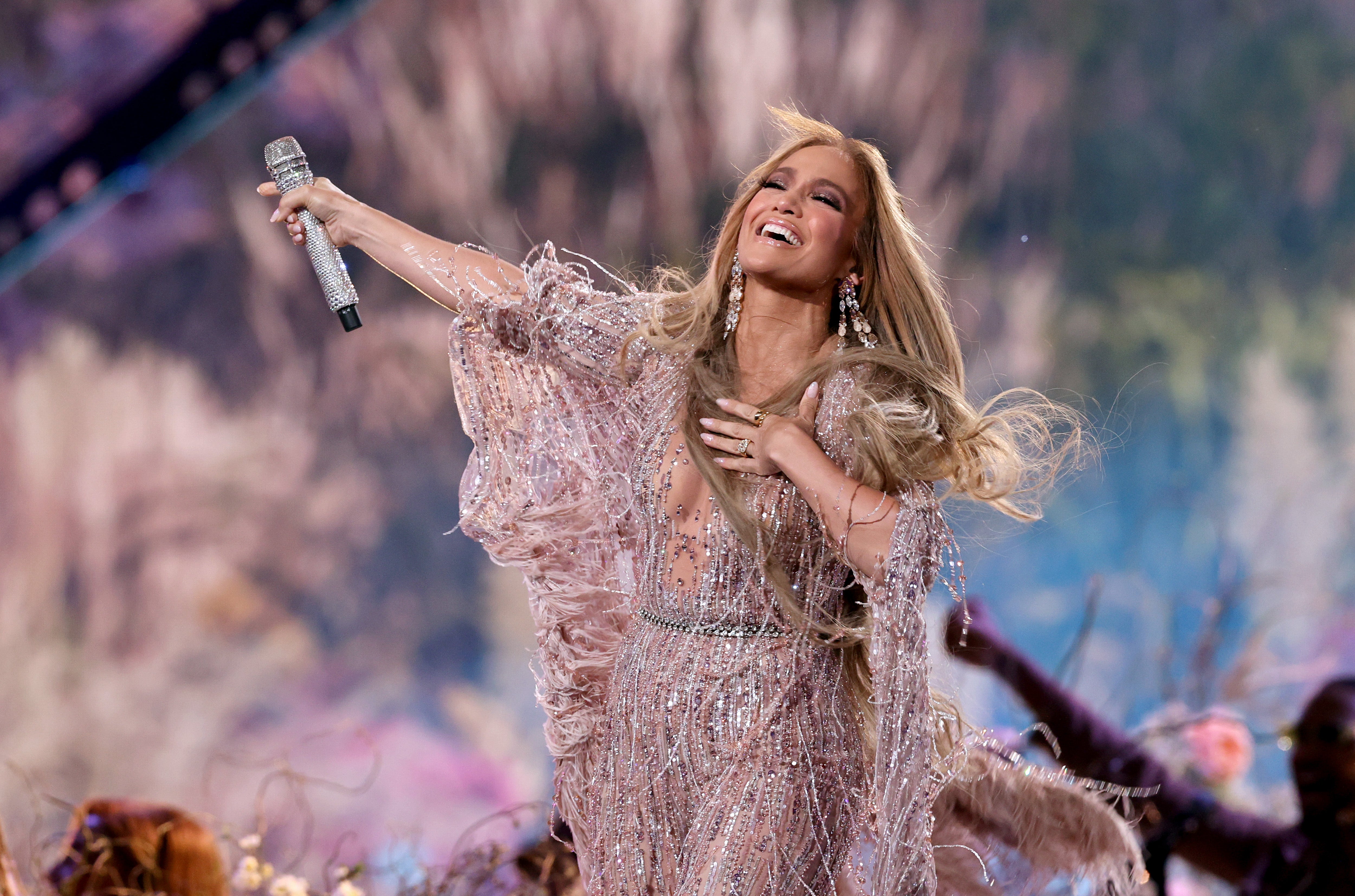The Independent's journalism is supported by our readers. When you purchase through links on our site, we may earn commission.
‘Hard to define but easy to identify’: What exactly is the J Lo Effect?
Jenny from the block has it all, so Sarah Bahr finds out how, according to experts, the cultural icon acquired her ability to have an appearance-boosting effect on men

While fans of the Netflix reality show Selling Sunset await a new season of luxury Los Angeles real estate and interpersonal conflict, there’s been plenty to watch on social media: wedding plans, pregnancies, European vacations and budding relationships.
Just last week, one of the Selling Sunset stars, Chrishell Stause, revealed on Instagram that she is dating Jason Oppenheim, who, with his twin brother, Brett, owns the high-end brokerage where she is an agent. Stause captioned the post, which featured several pictures from a cast trip to Capri, Italy: “The JLo effect. 🤷🏻♀️”
The caption seemed to be a reference to Jennifer Lopez’s own recent carousel of vacation photos, the final one showing Lopez kissing Ben Affleck. But the phrase predates that post by at least a decade.
So … What does it mean?
The J Lo effect is hard to define but easy to identify. Generally speaking, it refers to the ways in which Lopez, 52, defies almost every human standard (beauty, success, age, flexibility, relevance, you name it). The expression has been invoked at various points in her career, often to express awe.
When, at age 41, she persuaded American Idol producers to pay her about $12m to replace Simon Cowell, setting off a gold rush of big-name judges demanding similar paydays? “Call it the J. Lo effect,” The Hollywood Reporter proclaimed.
When she booked a Las Vegas residency at 46, yet avoided a downward slope on the fame parabola? “The J Lo Effect,” read the Las Vegas Weekly headline.
By virtue of being in a relationship with a highly desirable woman, a man is conveying that he has at least some desirable traits
When she obliterated the 2020 Super Bowl halftime show at 50? “The total J Lo Effect was kind of mesmerising,” The New York Times’s fashion critic Vanessa Friedman wrote.
Andrea McDonnell, an associate professor of communication at Providence College whose work examines celebrity gossip, says that Stause’s reference to Lopez “seems to speak to her ability to set trends, especially on social media”.
“It’s not that social media relationship announcements weren’t happening pre-Bennifer,” McDonnell clarifies. “It’s more that J Lo is such a cultural figure that we can pin other occurrences to her posts and compare them.”
But Stause’s usage also hints at a new connotation – one that refers to Lopez’s appearance-boosting effect on the men she dates.
A representative for Stause did not respond to an email requesting comment about what, precisely, she meant in her Instagram caption. Representatives for Lopez also did not reply to emailed questions about whether she watches Selling Sunset or is aware her name is now being invoked in a male-hotness-multiplier context.
As it turns out, there’s a scientific name for the phenomenon of females expressing greater interest in males who already have a partner – particularly a very attractive one – in both animals and humans: mate copying.
“The idea is that he must have a lot to offer in order to be dating someone who is such a catch,” says Jean Fitzpatrick, a relationship therapist in Manhattan.
Ryan C Anderson, a researcher at Monash University in Australia who wrote a dissertation on mate copying, said the glow-up interpretation of the J Lo effect sounded “a lot like the phenomenon”.
“By virtue of being in a relationship with a highly desirable woman, a man is conveying that he has at least some desirable traits,” Anderson says.
“It would be kind of like LeBron James endorsing a pair of basketball shoes,” he adds.
Men attaching themselves to beautiful women to bask in their glow is nothing new, McDonnell says.

But Lopez is different because she is at least as powerful as Affleck, if not more so, in terms of cultural and economic capital; she is worth an estimated $400m (£288m) and is the 56th highest-paid celebrity in the world, according to Forbes. And it was Lopez, with her 168 million Instagram followers compared with Affleck’s 5 million, who posted the big relationship reveal.
“So she’s the one putting her romance out there and having agency over her self-presentation,” McDonnell says. “Though Affleck may of course benefit from it.”
As for Stause and Oppenheim? The correlation is murkier, McDonnell says, because Oppenheim is her boss.
“So while Jason may benefit from a similar kind of ‘glow-up’ that J-Lo seems to have conferred on Ben, the power dynamics are more aligned with established gender norms,” McDonnell says.
Can the positive effects of dating someone as superhuman as Lopez last after a breakup?
“How long someone stays desirable for – how long the ‘glow-up’ lasts – is unclear,” Anderson says. “What we do know is that someone who is romantically desirable now is generally more highly valued than someone who was romantically desirable previously.”
Don’t tell A-Rod!
This article originally appeared in The New York Times.
Join our commenting forum
Join thought-provoking conversations, follow other Independent readers and see their replies
Comments


Bookmark popover
Removed from bookmarks